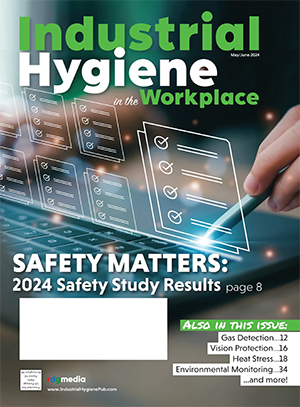Work-related deaths and disabilities show an increase globally
A team of researchers from Tampere University, Finland, and the International Commission on Occupational Health (ICOH) in Italy have published an overview of global estimates of work-related diseases and occupational injuries. When investigating mortality caused by work-related diseases, the researchers found an increase of some 26% in the eight-year period of 2011–2019. In the study, the burden of diseases and injuries was also demonstrated with the growing number of years lost in full health and the related economic loss as a percentage of GDP.
A new study provides global, regional, and country level estimates of the burden of occupational diseases and work-related accidents in 2019. The study investigated the burden in terms of deaths, disability-adjusted life years (DALYs) and economic loss as a percentage of the total gross domestic product (GDP). As a new addition, the researchers also analysed the DALYs attributable to psychosocial exposures at work.
“The burden of work-related diseases is a major global health challenge. Updated estimates are needed to understand the trends in the work-related burden of diseases, working conditions and their impact on workers’ health as well as to identify where the current efforts fall short,” says Dr. Subas Neupane, Senior Research Fellow at Tampere University.
Work-related deaths and DALYs estimates for a group of seven major diseases covering 120 risk-outcome pairs attributable to work were calculated at the global and WHO regional levels, and at the country level of 181 countries. The results show that, in 2019, 2.9 million deaths were attributed to work; 2.58 million deaths were due to work-related diseases and 0.32 million deaths to occupational injuries.
“Globally, work-related diseases with a long latency period are increasing while the number of occupational injuries has decreased,” Dr. Jukka Takala, former President of ICOH states.
Work-related circulatory diseases are the major cause of 912,000 deaths globally followed by 843,000 deaths attributed to work-related cancer (Fig. 1). However, in the high-income, American, Eastern Europe and Western Pacific WHO regions, work-related cancer is the biggest disease group. DALYs attributable to work was estimated to be 180 million in 2019. The economic loss was 5.8% of the global GDP. The recently included estimates of psychosocial factors increased the global loss.
The burden of work-related diseases is substantial globally, with a 26% increase from 2.3 million annual deaths in 2011 to 2.9 million in 2019 (Fig. 2). Likewise, disability-adjusted life years (DALYs) attributable to work have significantly risen by 47%, escalating from 123 million in 2014 to 180 million in 2019.
The researchers explain that this notable increase in DALYs is partly due to the inclusion of the recently introduced component of psychosocial exposures at work.
“There is a considerable regional and country variation in the burden of work-related diseases. A concerted and sustainable global effort to promote health and safety in the workplace is imperative to mitigate the burden of work-related diseases and accidents,” Neupane says.
As mortality does not give a complete picture of the burden of disease borne by individuals in different populations, the overall burden of disease is assessed using the disability-adjusted life year (DALY) indicator. DALY combines years of life lost due to premature mortality and years of life lost due to time lived in states of less than full health, or years of healthy life lost due to disability. One DALY represents the loss of one year of full health.
Disability-adjusted life years (DALYs) (who.int)
The results mark a comprehensive overview and an update of the global estimates of occupational injuries and work-related diseases made over the past 25 years by the International Labour Organization (ILO).
The study was conducted in cooperation with Tampere University, International Commission on Occupational Health (ICOH) and the Finnish Ministry of Social Affairs and Health. The research article was published in Scandinavian Journal of Work, Environment & Health.
Citation to original article published online: Takala J, Hämäläinen P, Sauni R, Nygård C-H, Gagliardi D, Neupane S. Global-, regional- and country-level estimates of the work-related burden of diseases and accidents in 2019. Scand J Work Environ Health – online first.
Share on Socials!
Zoll AED 3 and Comprehensive Rescue System Honored for Ability to Improve Workplace Safety
J. J. Keller Center for Market Insights Invites Risk Officers and Professionals to Participate in Environmental Risk Study
Front-line workers must prove they contracted coronavirus on the job to receive workers’ comp
Leaders in Industrial Hygiene
Council for Accreditation in Occupational Hearing Conservation (CAOHC)
Subscribe!
Sign up to receive our industry publications for FREE!








